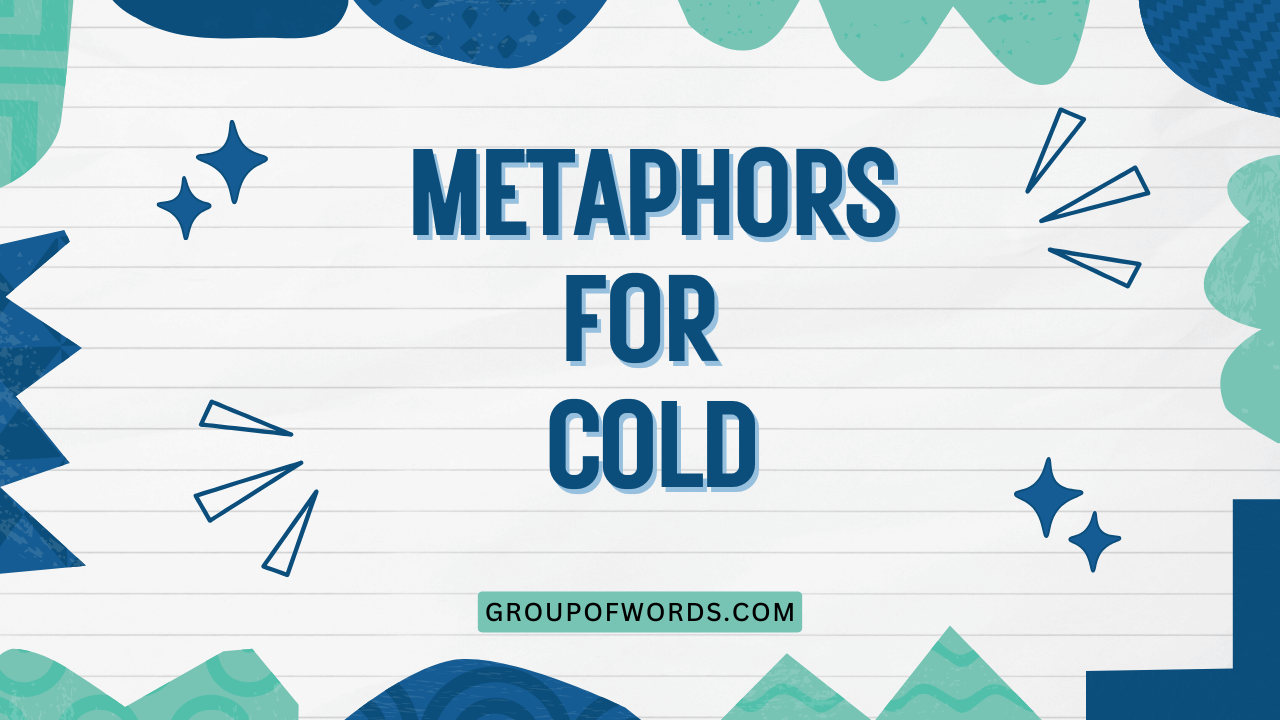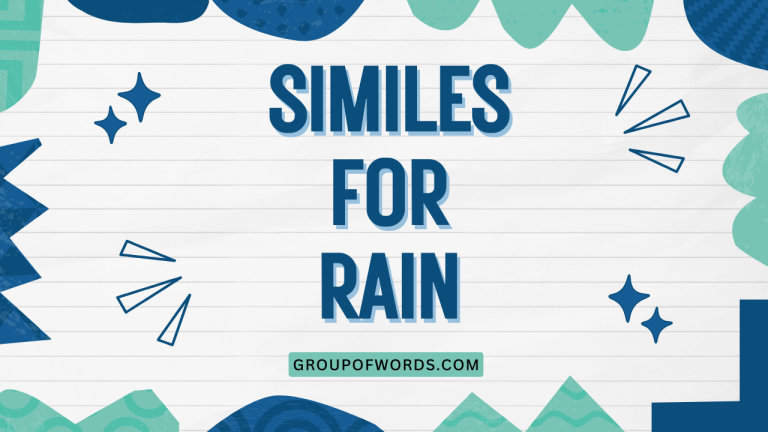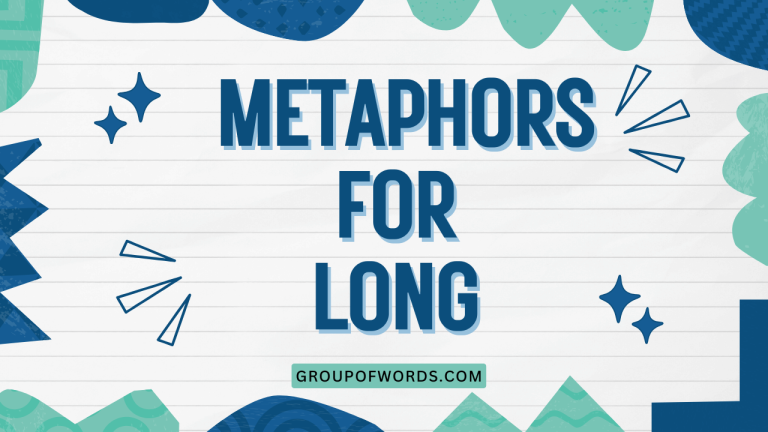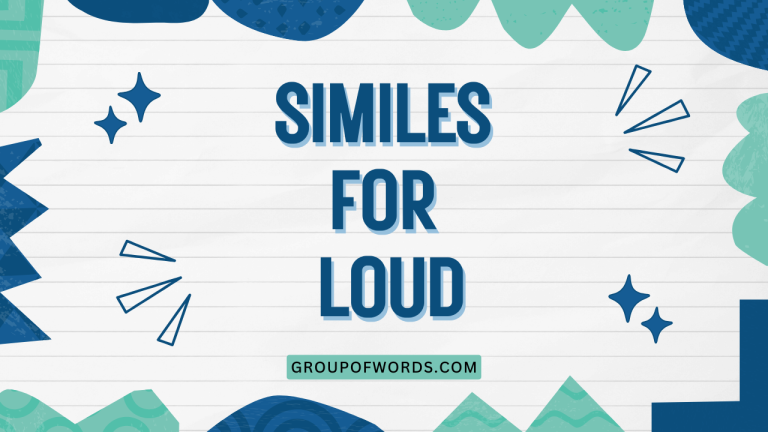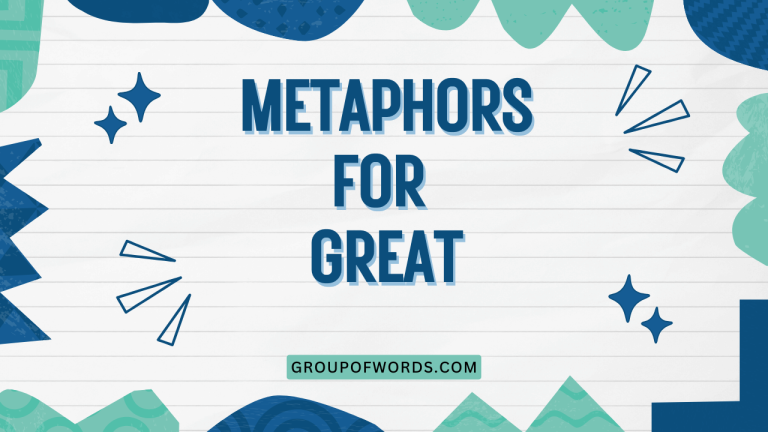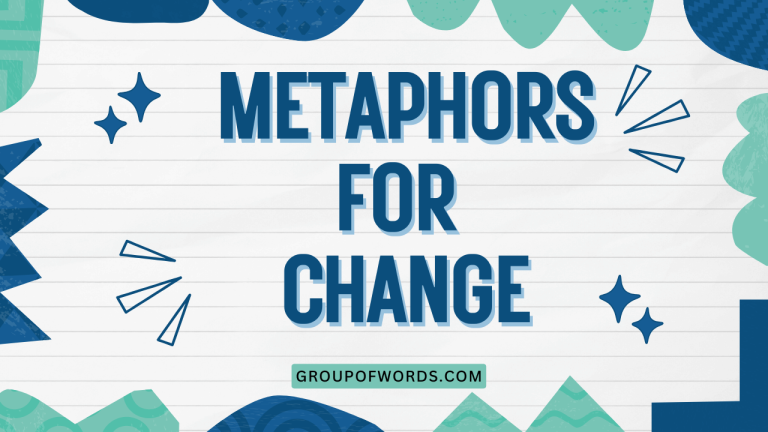Icy Tongues: Mastering Metaphors for Cold in English
Metaphors are powerful tools that enrich our language, allowing us to express abstract concepts in vivid and relatable ways. When describing the sensation of cold, we often turn to metaphors to convey the intensity and impact of low temperatures.
Understanding these “cold metaphors” not only enhances our comprehension of figurative language but also improves our overall communication skills. This article provides a comprehensive exploration of metaphors for cold, examining their structure, types, usage, and common pitfalls.
Whether you’re an English language learner, a writer seeking evocative descriptions, or simply someone fascinated by the nuances of language, this guide will equip you with the knowledge and skills to master the art of using metaphors for cold.
Table of Contents
- Introduction
- Definition of Metaphors for Cold
- Structural Breakdown
- Types and Categories of Cold Metaphors
- Examples of Metaphors for Cold
- Usage Rules for Cold Metaphors
- Common Mistakes When Using Cold Metaphors
- Practice Exercises
- Advanced Topics
- FAQ
- Conclusion
Definition of Metaphors for Cold
A metaphor is a figure of speech that directly compares two unrelated things, suggesting a likeness between them without using “like” or “as.” Metaphors for cold, therefore, use the concept of coldness to describe something else, often to emphasize a feeling, condition, or characteristic. These metaphors tap into our shared experience of physical cold to evoke a particular image or sensation in the reader’s mind.
The effectiveness of a cold metaphor lies in its ability to create a strong, immediate connection between the abstract and the concrete. For instance, describing someone’s demeanor as “icy” uses the physical sensation of cold to suggest emotional distance or unfriendliness.
The function of cold metaphors is primarily to add depth and color to language. They allow us to express complex ideas with brevity and impact.
By drawing on the universally understood experience of cold, these metaphors can quickly convey a sense of discomfort, isolation, or even danger. The context in which a cold metaphor is used is crucial to its interpretation.
Depending on the situation, “cold” can represent indifference, fear, death, or a lack of passion. Understanding these nuances is essential for both using and interpreting metaphors effectively.
Structural Breakdown
Metaphors, including those for cold, typically consist of two main elements: the tenor and the vehicle. The tenor is the subject being described, while the vehicle is the object or concept used to describe it. In a metaphor for cold, the “vehicle” is always something related to coldness, while the “tenor” can vary widely. Understanding this structure helps in analyzing and creating effective metaphors.
For example, in the phrase “a frigid response,” the tenor is the “response,” and the vehicle is “frigid.” The metaphor suggests that the response was unwelcoming or unfriendly, drawing a parallel between emotional coldness and the physical sensation of being cold. Similarly, in the sentence “His heart was frozen,” the tenor is “his heart,” and the vehicle is “frozen.” This metaphor conveys a sense of emotional numbness or lack of empathy. Recognizing the tenor and vehicle allows for a deeper appreciation of the metaphor’s meaning and impact.
Types and Categories of Cold Metaphors
Metaphors for cold can be categorized based on the aspects they emphasize. Here are some common categories:
Physical Sensations
These metaphors relate to the direct physical experience of cold, such as shivering, numbness, or the biting sensation of wind. They are often used to describe environments or conditions that evoke a strong sense of physical discomfort.
These metaphors directly link to our sensory experiences, making them particularly vivid and relatable.
Emotional States
These metaphors use cold to describe emotions such as indifference, apathy, or emotional distance. They often convey a sense of detachment or lack of warmth in interpersonal relationships.
These metaphors are powerful in conveying the impact of emotional coldness, highlighting the isolating and sometimes painful nature of such feelings.
Environmental Conditions
These metaphors describe environments or situations that resemble cold, barren landscapes. They often evoke a sense of desolation or lack of life.
These metaphors can be used to create a sense of foreboding or to emphasize the harshness of a particular situation.
Behavioral Traits
These metaphors describe behaviors or actions that are perceived as cold, calculated, or lacking in empathy. They often highlight a person’s lack of compassion or their willingness to act ruthlessly.
These metaphors are frequently used to critique or condemn certain actions or behaviors.
Examples of Metaphors for Cold
The following tables provide numerous examples of metaphors for cold, categorized by the types discussed above. Each example is designed to illustrate how cold can be used metaphorically to describe different aspects of human experience.
Table 1: Physical Sensations
This table illustrates metaphors that relate to the direct physical experience of cold, such as shivering or numbness.
| Metaphor | Explanation |
|---|---|
| The news sent a chill down her spine. | The news caused a sudden feeling of fear or unease. |
| His words were like a glacial wind, cutting through the silence. | His words were harsh and unwelcome, like a cold wind. |
| The room was arctic; I could see my breath. | The room was extremely cold. |
| A frosty reception awaited them at the door. | They were greeted with an unwelcoming attitude. |
| Her hands were icicles after being outside. | Her hands were extremely cold. |
| The air was bitter enough to freeze your lungs. | The air was extremely cold and harsh. |
| His stare was freezing, making her uncomfortable. | His stare was cold and unfriendly. |
| The silence was glacial, thick and unmoving. | The silence was heavy and uncomfortable. |
| She felt a shiver of anticipation before the performance. | She felt a thrill of excitement mingled with nervousness. |
| The rejection left him feeling numb. | The rejection left him emotionally unresponsive. |
| His skin felt like ice to the touch. | His skin was extremely cold. |
| The memory sent a cold wave through her. | The memory caused a sudden feeling of discomfort. |
| Her voice was chilled with disappointment. | Her voice expressed a feeling of disappointment. |
| He had a cold sweat before the exam. | He was sweating nervously. |
| The fear froze him in place. | The fear paralyzed him. |
| The icy grip of winter held the town captive. | Winter’s cold was severe and inescapable. |
| A cold hand of dread gripped her heart. | She felt a sudden and intense fear. |
| The frost of age had settled on his shoulders. | He was showing signs of aging. |
| The snowy silence of the mountains was deafening. | The silence was vast and overwhelming. |
| She felt a wintery blast of despair. | She felt a strong sense of sadness and hopelessness. |
| His words froze the smile on her face. | His words suddenly made her smile disappear. |
| The icy rain stung her cheeks. | The rain was cold and painful. |
| A cold wind whispered through the trees. | The wind felt cold and eerie. |
| The frozen ground crunched beneath her feet. | The ground was hard and icy. |
Table 2: Emotional States
This table presents metaphors that use cold to describe emotions such as indifference or apathy.
| Metaphor | Explanation |
|---|---|
| He gave her a cold shoulder. | He treated her with indifference or disdain. |
| Their relationship had turned icy. | Their relationship had become strained and unfriendly. |
| She had a heart of ice. | She was emotionally cold and unfeeling. |
| His words were frosty and unwelcoming. | His words were cold and unfriendly. |
| The atmosphere in the room was frigid. | The atmosphere was tense and unwelcoming. |
| He offered a cold apology. | His apology was insincere and lacked emotion. |
| Her smile was frozen, lacking warmth. | Her smile was forced and insincere. |
| The news left him feeling cold inside. | The news left him emotionally empty and detached. |
| She had a glacial personality. | She was emotionally distant and aloof. |
| His anger was a cold, simmering rage. | His anger was controlled but intense. |
| The silence between them was arctic. | The silence was cold and strained. |
| He regarded her with icy detachment. | He looked at her with a cold and distant expression. |
| Her voice had a chill to it. | Her voice sounded cold and unfriendly. |
| He maintained a frozen expression. | He kept a cold, unmoving expression on his face. |
| She felt a cold wave of despair wash over her. | She felt a sudden and intense feeling of sadness. |
| His icy glare silenced the room. | His cold look caused everyone to become quiet. |
| She responded with a cold indifference. | She showed a lack of interest or concern. |
| His frigid demeanor kept everyone at a distance. | His cold behavior made people want to avoid him. |
| The frozen wasteland of her emotions was vast. | Her emotional state was empty and desolate. |
| A cold judgment clouded his eyes. | He looked at the situation without empathy. |
| The icy grip of loneliness tightened around her. | She felt increasingly isolated and alone. |
| His frozen heart couldn’t feel love. | He was incapable of experiencing affection. |
| She delivered the news with cold precision. | She delivered the news without emotion. |
| An icy calm settled over her before the storm. | She became unnaturally calm despite the chaos. |
Table 3: Environmental Conditions
This table provides metaphors describing environments or situations that resemble cold, barren landscapes.
| Metaphor | Explanation |
|---|---|
| The office was a glacial environment. | The office was unwelcoming and competitive. |
| The political climate was arctic. | The political situation was tense and unforgiving. |
| The town had become a frozen wasteland. | The town had become desolate and lifeless. |
| The relationship was a cold, barren landscape. | The relationship lacked warmth and affection. |
| The business world is a frigid place. | The business world is competitive and ruthless. |
| The stage was set in a frozen forest. | The stage design created a cold and eerie atmosphere. |
| Her memories were a cold, desolate landscape. | Her memories were filled with sadness and loss. |
| The city was a frozen metropolis. | The city was cold and impersonal. |
| His dreams were a cold, empty space. | His dreams lacked hope and fulfillment. |
| The courtroom was a frigid arena. | The courtroom was an intimidating and unwelcoming environment. |
| The internet can be a cold and unforgiving place. | The internet can be impersonal and harsh. |
| The desert stretched out like a frozen sea of sand. | The desert was vast and desolate. |
| His mind was a cold, empty chamber. | He was unable to think or feel. |
| The debate was held in a frozen atmosphere of hostility. | The debate was strained and unfriendly. |
| The world felt like a cold and distant planet. | She felt isolated and disconnected from the world. |
| The project was launched into a glacial market. | The market conditions were unfavorable and slow. |
| Her career had become a frozen path to nowhere. | Her career lacked progress and opportunity. |
| The academic environment was cold and competitive. | The academic world was demanding and impersonal. |
| The icy mountains stood guard over the valley. | The mountains were imposing and forbidding. |
| His past was a frozen chapter he couldn’t revisit. | He was unable to confront or change his past. |
| The silence in the old house was cold and heavy. | The silence was oppressive and unsettling. |
| Her childhood memories were a frozen landscape of neglect. | Her childhood was characterized by a lack of care and attention. |
Table 4: Behavioral Traits
This table shows metaphors that describe behaviors or actions that are perceived as cold or lacking empathy.
| Metaphor | Explanation |
|---|---|
| He made a cold calculation. | He made a decision without emotion or empathy. |
| She gave a frosty response to his request. | She responded unenthusiastically and unwelcomingly. |
| His actions were icy and deliberate. | His actions were calculated and lacking in warmth. |
| He delivered the news with cold precision. | He delivered the news without emotion or sympathy. |
| Her behavior was frigid and unapproachable. | Her behavior was cold and unfriendly. |
| He planned the attack with cold efficiency. | He planned the attack without regard for human life. |
| Her words were cold and cutting. | Her words were harsh and hurtful. |
| He executed the plan with icy resolve. | He carried out the plan with unwavering determination. |
| She maintained a frozen composure. | She remained calm and unemotional. |
| His decision was a cold, calculated move. | His decision was based on strategy, not emotion. |
| He treated her with icy indifference. | He showed a lack of concern for her feelings. |
| She administered the punishment with cold detachment. | She gave the punishment without emotion or sympathy. |
| His cold stare could freeze anyone in their tracks. | His look was intimidating and chilling. |
| She approached the problem with cold logic. | She analyzed the problem objectively without emotion. |
| His icy demeanor intimidated his opponents. | His cold behavior made his competitors fearful. |
| He made a cold assessment of the situation. | He evaluated the situation objectively without emotion. |
| His frigid reply shut down the conversation. | His cold response ended the discussion abruptly. |
| She handled the crisis with icy calm. | She managed the crisis without showing emotion. |
| He delivered the verdict with cold authority. | He announced the decision without any warmth. |
Usage Rules for Cold Metaphors
Using metaphors effectively requires an understanding of context and audience. Here are some key rules to follow when using metaphors for cold:
- Consider the Context: Ensure that the metaphor aligns with the overall tone and subject matter. A cold metaphor might be inappropriate in a lighthearted or celebratory context.
- Know Your Audience: Be mindful of your audience’s cultural background and understanding of the metaphor. Some metaphors may not translate well across different cultures.
- Avoid Clichés: While some cold metaphors are common, try to avoid overused phrases like “heart of ice.” Strive for originality and creativity.
- Be Consistent: Maintain consistency in your use of metaphors. Mixing metaphors can confuse the reader and weaken your message.
- Ensure Clarity: Make sure the connection between the tenor and the vehicle is clear. The metaphor should enhance understanding, not obscure it.
- Don’t Overuse: Metaphors are most effective when used sparingly. Overusing them can make your writing feel forced and unnatural.
Common Mistakes When Using Cold Metaphors
Even experienced writers can make mistakes when using metaphors. Here are some common errors to avoid:
Mixing Metaphors: Combining unrelated metaphors can create confusion and weaken your writing.
- Incorrect: “He nipped the budget cuts in the bud with an icy fist.” (Mixing floral and cold metaphors)
- Correct: “He halted the budget cuts with an icy fist.”
Using Clichés: Overused metaphors can make your writing sound unoriginal and uninspired.
- Incorrect: “She had a heart of ice.”
- Correct: “Her heart was a glacier, slowly eroding any warmth.”
Lack of Clarity: If the connection between the tenor and vehicle is unclear, the metaphor will fail to resonate.
- Incorrect: “The project was a cold front.” (Unclear connection)
- Correct: “The project was a cold front, bringing unexpected challenges and delays.”
Inappropriate Tone: Using a cold metaphor in a context where it doesn’t fit can be jarring.
- Incorrect: “The party was an arctic blast of fun!” (Incongruous metaphor)
- Correct: “The party was a tropical explosion of fun!”
Practice Exercises
Test your understanding of metaphors for cold with these exercises.
Exercise 1: Identifying Metaphors
Identify the metaphors for cold in the following sentences and explain their meaning.
| Question | Answer |
|---|---|
| 1. His words were like a glacial wind. | Metaphor: glacial wind. Meaning: His words were harsh and unwelcoming. |
| 2. She gave him the cold shoulder. | Metaphor: cold shoulder. Meaning: She treated him with indifference. |
| 3. The news sent a chill down her spine. | Metaphor: chill. Meaning: The news caused a sudden feeling of fear. |
| 4. The office was a frigid environment. | Metaphor: frigid environment. Meaning: The office was unwelcoming and competitive. |
| 5. His stare was freezing. | Metaphor: freezing. Meaning: His stare was cold and unfriendly. |
| 6. The silence was glacial in the room. | Metaphor: Glacial. Meaning: The silence was heavy and uncomfortable. |
| 7. She had a heart of ice. | Metaphor: Heart of ice. Meaning: She was emotionally cold and unfeeling. |
| 8. The political climate was arctic. | Metaphor: Arctic. Meaning: The political situation was tense and unforgiving. |
| 9. The courtroom was a frigid arena. | Metaphor: Frigid arena. Meaning: The courtroom was an intimidating and unwelcoming environment. |
| 10. He made a cold calculation. | Metaphor: Cold calculation. Meaning: He made a decision without emotion or empathy. |
Exercise 2: Creating Metaphors
Create your own metaphors for cold to describe the following scenarios.
| Scenario | Possible Metaphor |
|---|---|
| 1. A tense family gathering. | The gathering was an arctic tundra of unspoken resentment. |
| 2. A politician’s unemotional speech. | His speech was a frozen river, flowing without warmth or life. |
| 3. A deserted city street at night. | The street was a cold, empty tomb, devoid of life. |
| 4. A company’s ruthless cost-cutting measures. | The cost-cutting measures were an icy axe, severing jobs and morale. |
| 5. A person who is emotionally distant. | He was a frozen fortress, impenetrable to affection. |
| 6. A harsh winter storm. | The storm was a frigid beast, clawing at the city with icy fury. |
| 7. A feeling of isolation and loneliness. | Loneliness was a cold blanket, suffocating her with its emptiness. |
| 8. A business negotiation with no room for compromise. | The negotiation was a glacial standoff, neither side willing to yield. |
| 9. A critical review of a performance. | The review was an icy dagger, piercing the performer’s confidence. |
| 10. A long period of economic stagnation. | The economy was a frozen lake, unable to thaw and flow again. |
Exercise 3: Correcting Mistakes
Identify and correct the mistakes in the following sentences.
| Incorrect Sentence | Corrected Sentence |
|---|---|
| 1. He had a heart of ice and a sunny disposition. | He had a heart of ice, masking a deeper vulnerability. |
| 2. The project was a cold front nipping at the heels of success. | The project was a cold front hindering our progress. |
| 3. The party was an arctic blast of summer fun! | The party was a refreshing splash of summer fun! |
| 4. Her smile was a frozen volcano, ready to erupt. | Her smile was a frozen mask, hiding her true feelings. |
| 5. His words were like a cold furnace, warming the room. | His words were like a cold blast, chilling the room. |
| 6. The relationship was a cold garden, blooming with love. | The relationship was a barren wasteland, devoid of love. |
| 7. His decision was an icy hammer, building a better future. | His decision was an icy hammer, shattering the existing structure. |
| 8. She approached the task with a cold fire in her eyes. | She approached the task with a cold determination in her eyes. |
| 9. The atmosphere was a frigid oven, baking with tension. | The atmosphere was a frigid silence, heavy with tension. |
| 10. He gave the news with a cold spring in his step. | He gave the news with a cold detachment in his voice. |
Advanced Topics
For advanced learners, consider exploring the use of extended metaphors and symbolism related to cold in literature and film. Analyze how authors and filmmakers use cold imagery to convey complex themes such as alienation, isolation, and the human condition.
Study the works of authors like Jack London, whose stories often feature extreme cold as a backdrop for exploring themes of survival and human resilience. Examine films like “The Shining,” where the isolated, snowbound setting amplifies the psychological horror.
Furthermore, research the cultural variations in the perception and metaphoric use of cold, as different cultures may associate cold with different meanings and emotions.
FAQ
Here are some frequently asked questions about metaphors for cold:
- What is the difference between a metaphor and a simile?
A metaphor directly compares two things, while a simile uses “like” or “as” to make a comparison. For example, “He is a rock” (metaphor) vs. “He is like a rock” (simile).
- Why are metaphors for cold so common in English?
The physical sensation of cold is a universal experience, making it a relatable and powerful tool for conveying abstract concepts. The strong sensory association allows for immediate and impactful communication.
- How can I improve my ability to create effective metaphors?
Read widely, pay attention to the metaphors used by skilled writers, and practice creating your own metaphors regularly. Experiment with different combinations of tenor and vehicle, and seek feedback from others.
- Are there any negative connotations associated with cold metaphors?
Yes, cold metaphors often carry negative connotations, such as indifference, apathy, or lack of emotion. However, the specific meaning depends on the context and the intended message.
- Can metaphors for cold be used in positive contexts?
While less common, cold metaphors can be used in positive contexts to describe clarity, precision, or a refreshing change. For example, “His analysis was a cold, clear assessment of the situation.”
- How do cultural differences affect the interpretation of cold metaphors?
Different cultures may have different associations with cold, which can influence the interpretation of metaphors. For example, in some cultures, cold may be associated with purity or cleanliness, while in others, it may primarily represent death or danger. Understanding these cultural nuances is crucial for effective communication.
- What are some common clichés to avoid when using metaphors for cold?
Avoid overused phrases such as “heart of ice,” “cold as ice,” and “give someone the cold shoulder.” Strive for originality and creativity in your metaphor usage.
- How can I ensure that my metaphors for cold are clear and understandable?
Make sure the connection between the tenor and the vehicle is clear and logical. Provide enough context to help the reader understand the intended meaning of the metaphor. Avoid using overly abstract or obscure language.
Conclusion
Mastering metaphors for cold is a valuable skill that enhances your ability to express complex ideas in a vivid and impactful way. By understanding the structure, types, and usage rules of these metaphors, you can effectively convey a wide range of emotions and experiences.
Remember to consider the context, audience, and potential connotations of your metaphors, and strive for originality and clarity in your writing. With practice and attention to detail, you can harness the power of cold metaphors to enrich your language and communicate with greater precision and creativity.
The ability to use metaphors effectively is a hallmark of strong communication skills. As you continue to explore the nuances of language, remember that metaphors are not just decorative elements but powerful tools that can shape understanding and evoke emotions.
By embracing the art of metaphor, you can unlock new levels of expression and connect with your audience in meaningful ways. So, embrace the challenge, experiment with different approaches, and let your creativity flow.
The world of language is vast and full of possibilities, and metaphors are just one of the many tools you can use to navigate it with skill and confidence.
